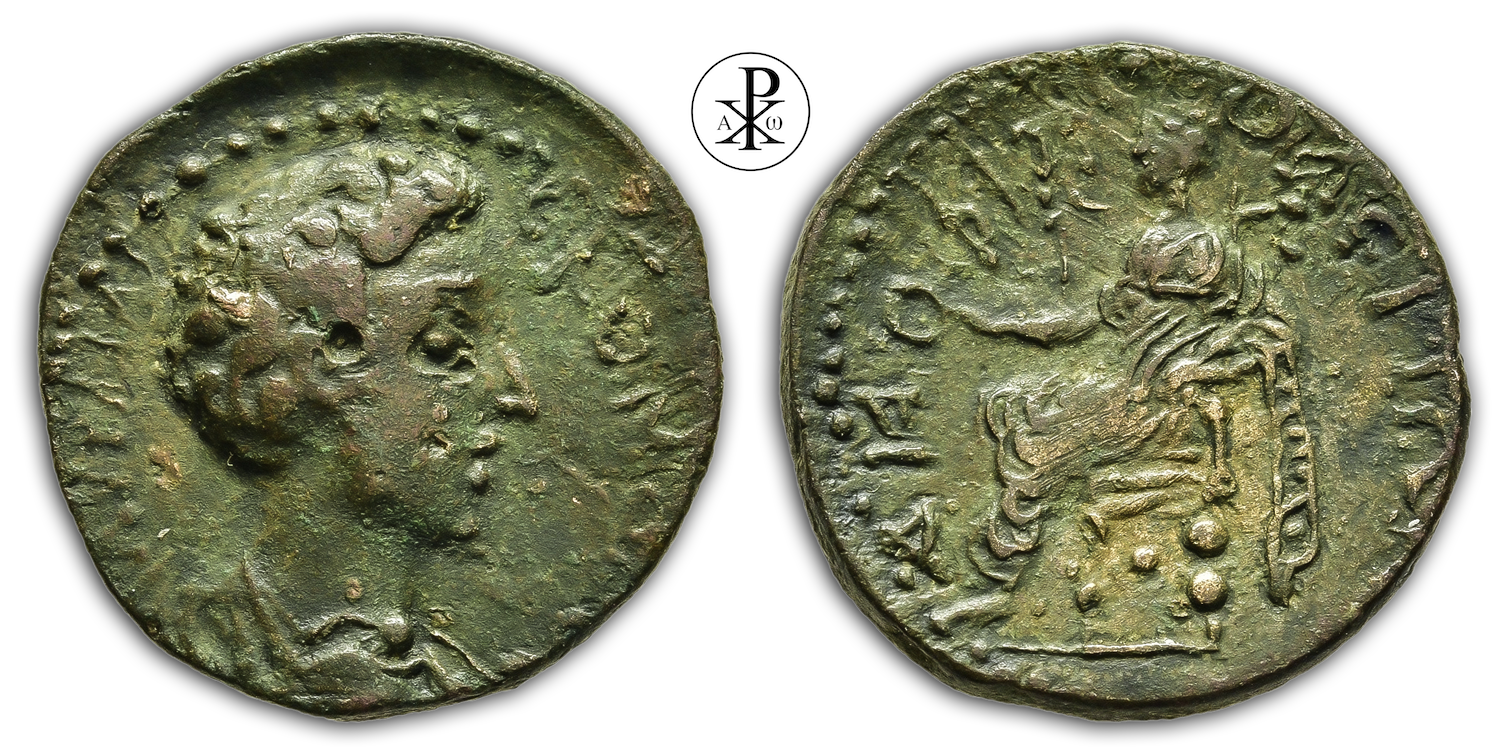Lucius Aurelius Commodus Caesar Augusti Filius
Reign: Marcus Aurelius
Mint: Amphipolis, Macedonia
Date: 176/177 AD
Nominal: Bronze
Material: AE
Diameter: 23mm
Weight: 7.63g
Reference: RPC IV.1 4243 (#4 this coin)
RPC Online: https://rpc.ashmus.ox.ac.uk/coins/4/4243
Rare: Specimens 4 (3 in the core collections)
Provenance: Numisfitz Numismatik Munich, Germany (Auction 1, Lot 421)
Pedigree: –
Obverse: Bare-headed bust of Commodus (youthful) wearing cuirass and paludamentum, right
Inscription: ΑΥΤΟ Λ ΑV ΚΟΜΟΔΟϹ ΚΑΙϹΑΡ
Translation: Autokrator Lucios Aurelios Komodos Kaisaros
Translation: Imperator Lucius Aurelius Commodus Caesar
Reverse: Turreted Tyche seated, left, holding patera
Inscription: ΑΜΦΙΠΟΛƐΙΤΩΝ
Translation: Amphipoleiton
Translation: City and People of Amphipolis
Comment: Amphipolis was an ancient Greek polis that existed continuously as an urban settlement until late antiquity. It extends for several kilometres around the acropolis of the ancient city. Ancient Amphipolis lies about 80 kilometres east of Thessaloniki on the European Road 90. The acropolis borders directly on the modern town of Amfipoli to the south, and the individual excavation sites are distributed around the acropolis. The finds from the region are exhibited in the Archaeological Museum in Amfipoli. Amphipolis was founded in 437 BC by the Athenian commander Hagnon and was intended to serve as a base for Athens to control the nearby gold and silver mines. The city gained importance during the Peloponnesian War, partly because of the procurement of wood for shipbuilding and revenue from the mines. The city surrendered without a fight to the Spartan general Brasidas in 424 BC. Repeated attempts by the Athenians to recapture the city failed. In 356 BC, Amphipolis was conquered by Philip II of Macedonia and incorporated into the Macedonian kingdom. In the Third Macedonian-Roman War, the Roman general Lucius Aemilius Paullus and the Macedonian king Perseus faced each other in the Battle of Pydna. After this lost battle, Perseus fled with his gold to Amphipolis. Aemilius Paullus took the city and imprisoned him, ending the Macedonian kingdom. In 167 BC, the Senate Commission negotiated the division of territories in Amphipolis and the city was declared a protectorate of Rome. Amphipolis developed into an important trading centre and became the capital of the first district of the province of Macedonia under Roman rule. According to the Acts of the Apostles (17,1), Paul visited the city on his second missionary journey.
Tyche is the Greek goddess of fate, luck and chance, and is equated with the Roman Fortuna. Originally a goddess and lucky charm of sailors, she was later worshipped as a city goddess with lavish temples in many places in the Greek world. As a goddess who can bring about both fortunate and evil fortunes, Tyche is of an ambivalent and unpredictable character. The origins of Tyche are obscure. In Hesiod she is still described as a Titaness and daughter of Okeanos and Tethys. Later she is the daughter of Zeus. As the personification of chance and change, however, she became very important as a religious figure early on. Thus, from the second half of the 5th century BC onwards, there is evidence of a Tyche cult, which presumably contributed to her spread in the Greek and Asia Minor regions. From the 3rd century BC onwards, the veneration of Tyche as a goddess of fate reached its peak, as she was elevated to the patron saint of many cities. The city goddess Tyche is found on the reverse of the city coinage on many issues of various emperors and epochs, so that here too it can be assumed that there was quite a lively active worship of Tyche in Amphipolis.
